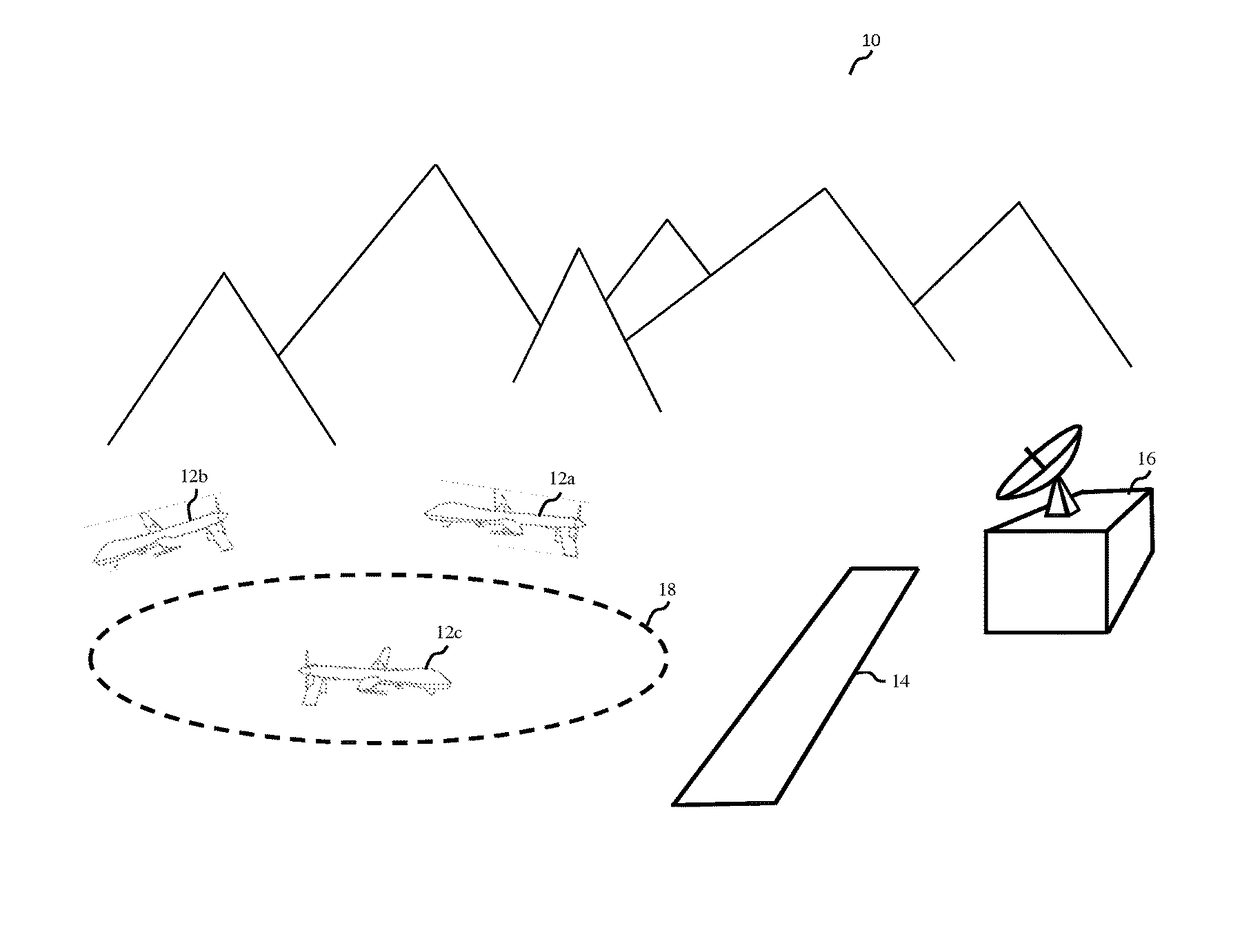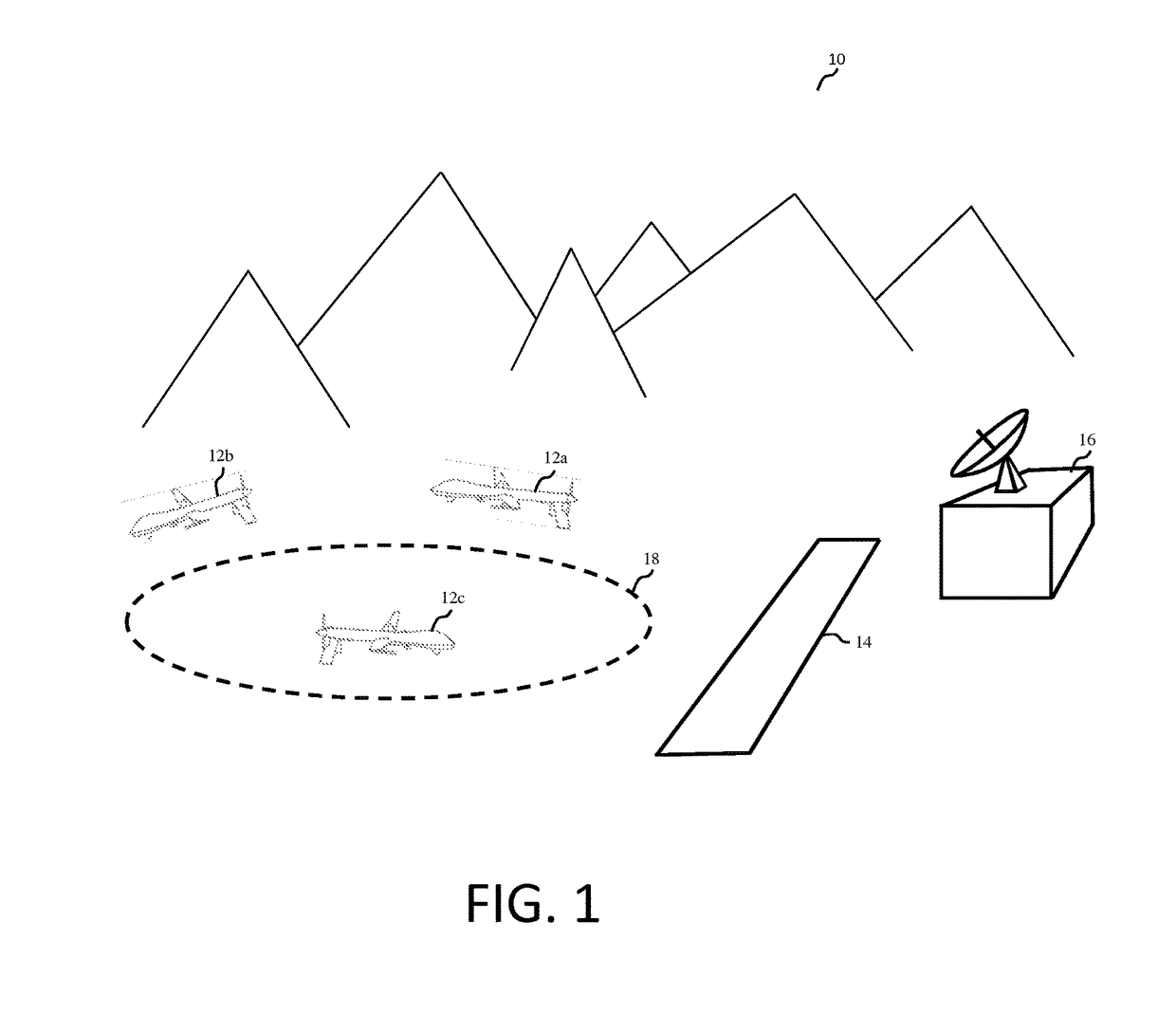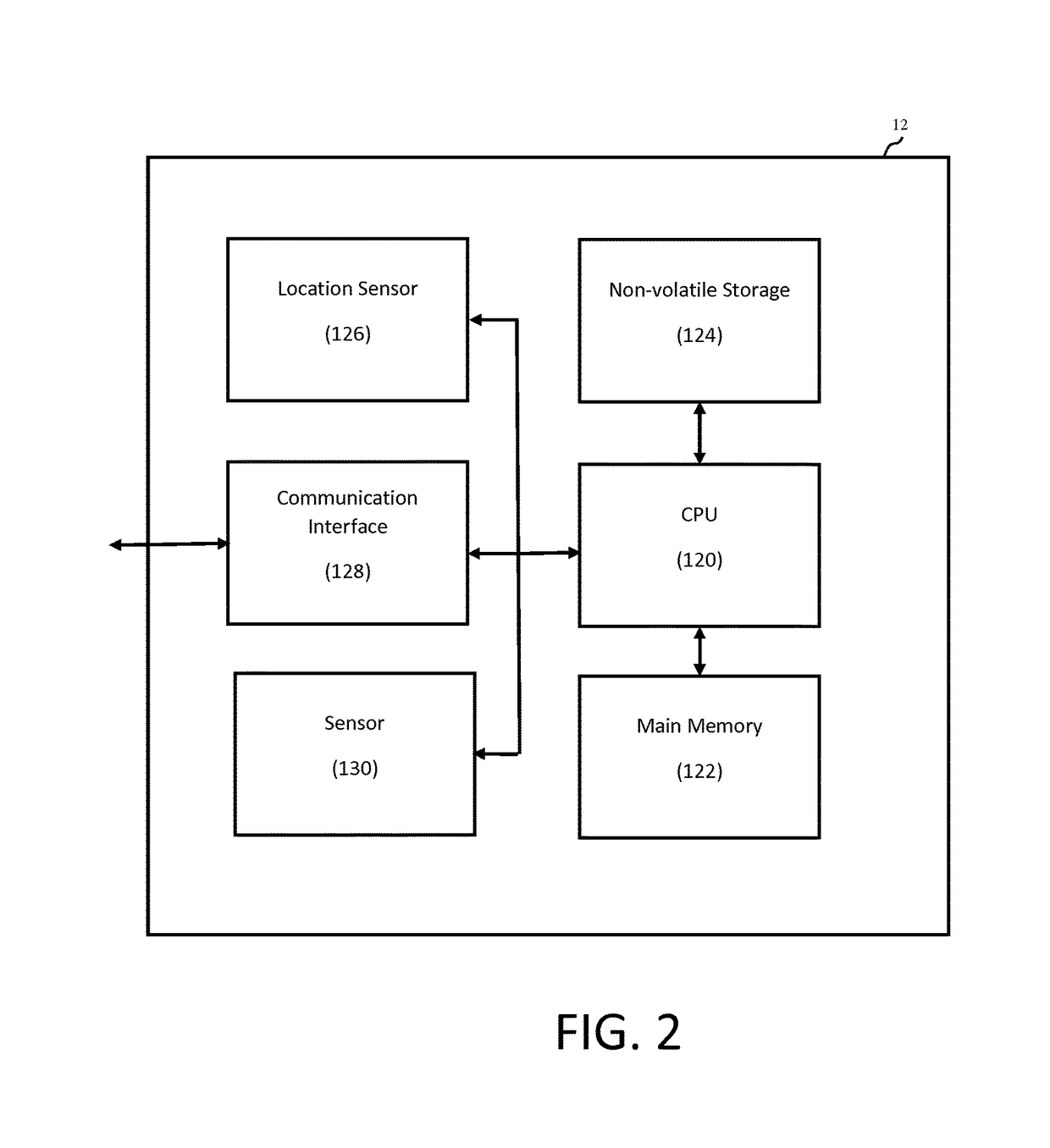Collisionless flying of unmanned aerial vehicles that maximizes coverage of predetermined region
- Summary
- Abstract
- Description
- Claims
- Application Information
AI Technical Summary
Benefits of technology
Problems solved by technology
Method used
Image
Examples
Embodiment Construction
[0029]The present invention relates to a system and method for ensuring collisionless flight of three or more unmanned aerial vehicles (UAVs). Collisionless flight is achieved by overlaying a circulant digraph with certain characteristics over the area to be flown. Each UAV is then assigned to a flight path corresponding to a directed cycle of the circulant digraph where each vertex of the circulant digraph corresponds to two waypoints. To maximize coverage, each of the vertices of the circulant digraph may then be updated such that they satisfy two tests: a convexity test and an isosceles avoidance test. The updated waypoint may then be relayed from a control station to each UAV.
[0030]Advantageously, each UAV does not require any collision avoidance sensors or knowledge of the position of other UAVs in the area. This reduces the cost, size and complexity of the UAVs. Further, each UAV does not require communication with the other UAVs. Accordingly, the UAVs may be a heterogeneous m...
PUM
 Login to View More
Login to View More Abstract
Description
Claims
Application Information
 Login to View More
Login to View More - R&D
- Intellectual Property
- Life Sciences
- Materials
- Tech Scout
- Unparalleled Data Quality
- Higher Quality Content
- 60% Fewer Hallucinations
Browse by: Latest US Patents, China's latest patents, Technical Efficacy Thesaurus, Application Domain, Technology Topic, Popular Technical Reports.
© 2025 PatSnap. All rights reserved.Legal|Privacy policy|Modern Slavery Act Transparency Statement|Sitemap|About US| Contact US: help@patsnap.com



